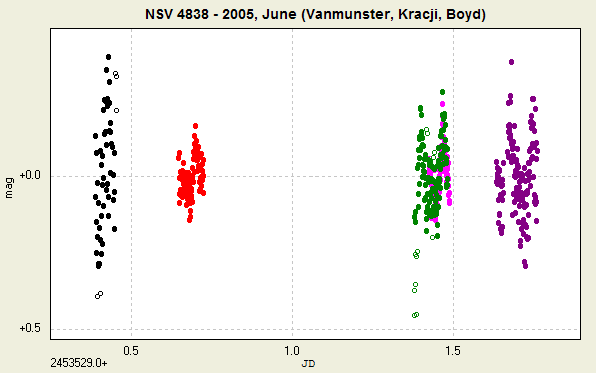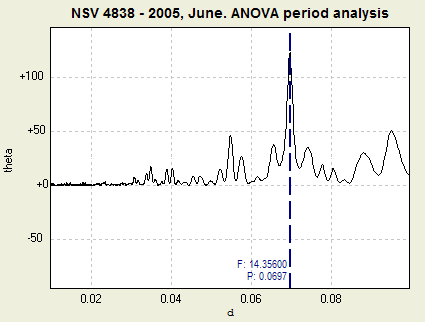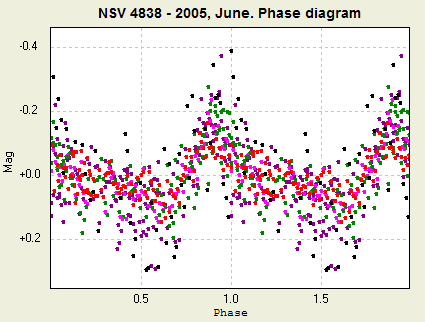NSV
4838 - a new UGSU-type dwarf nova
Following the announcements by Patrick Schmeer and
Jochen Pietz (on CVnet) of an outburst of the dwarf
nova NSV 4838, I started an unfiltered photometry
session of this target at CBA Belgium Observatory on
2005, Jun 7/8. Sky conditions were moderate only,
and I was able to collect about 54 useful images
during a time span of 1.6 hours. I furthermore
received CBA observations of NSV 4838 from Tom
Kracji, USA, obtained on 2005, Jun 8. Tom was able
to collect about 100 useful frames during 1.8 hours.
Our data sets clearly revealed the presence of
superhumps in NSV 4838, thus classifying the system
as a new UGSU-type dwarf nova. Jochen Pietz,
Germany independently also detected the superhumps
in this dwarf nova.
By June 9th, I received further CCD observations
of Tom Kracji and also of David Boyd, UK. Based on a
total of nearly 500 observations (fig. 1), obtained
between 2005, June 7th and June 9th, I found a
superhump period using ANOVA (and several other
methods of Peranso) of 0.0697 +/- 0.0003 d
(fig. 2). Despite the difficult location of NSV
4838 in the evening sky, the longitudinal spread of
the observers worked very well to precisely
determine the superhump characteristics of NSV 4838.
The average superhump amplitude is 0.3 mag (fig. 3).
Assuming a normal superhump period excess value
of 2.6%,
the superhump period of 0.0697 d (or
100 min) corresponds to a Porb of 97.8 min, which is
in complete agreement with the value of 97.6 min,
derived by John Thorstensen through radial velocity
spectroscopy.
John's spectroscopy yielded a second
possible Porb of 91.4 min, which seems to be no
longer favoured, given the above Psh value.

Fig. 1. Combined NSV 4838
lightcurve with observations from Vanmunster, Kracji
and Boyd (Peranso figure)

Fig. 2. ANOVA period diagram of
NSV 4838 (Peranso figure)

Fig. 3. Phase diagram of NSV 4838
(Peranso figure)